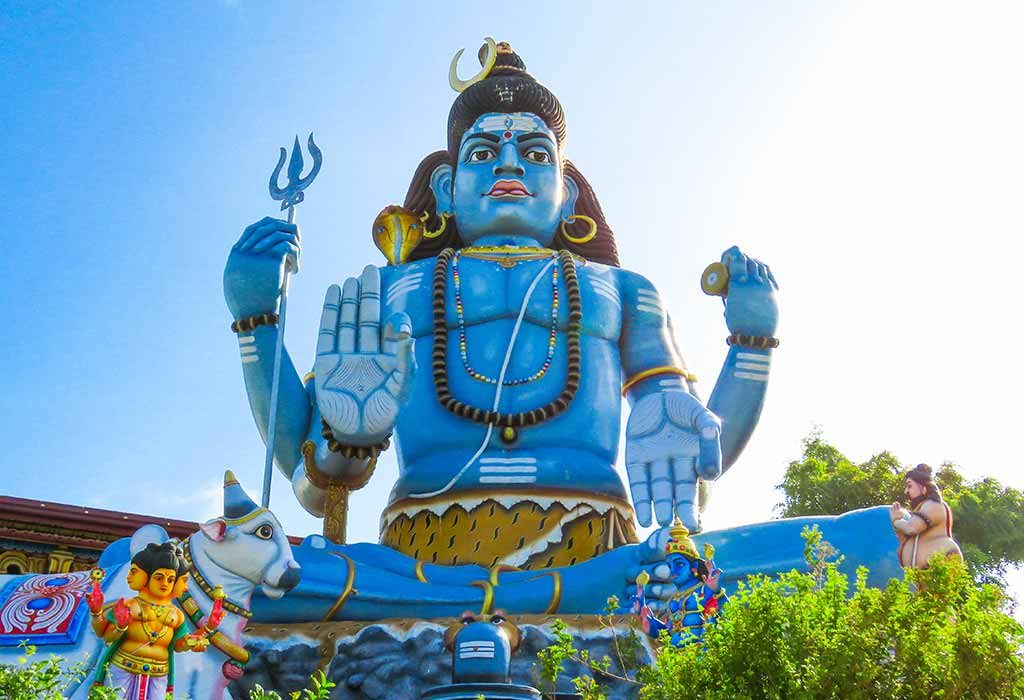Mahashivratri – The great night of Shiva
Mahashivratri is dedicated to the honor and worship of Lord Shiva. It is celebrated annually on the 13th or 14th day of Phalguna month of the Hindu calendar. On this night, the moon is in crescent form, which is a phase before the beginning of a new moon. The crescent moon is a representation of changing times, and Shiva adorning the crescent moon signifies His mastery over time. Worshipping Lord Shiva on this time makes one lose track of time and bring awareness in the present moment to experience the inner bliss and timeless nature of the Self.
Significance of Mahashivratri puja
The energy is naturally on its upsurge on this day thus driving one towards his/her highest spiritual point. Thus, making Mahashivratri a highly propitious night to draw the awareness inwards with ease through spiritual practices. Throughout the day and night vigil, devotees indulge in spiritual practices including singing bhajans (devotional songs), reciting hymns, performing puja, Shivling Abhishek, and meditating to feel drawn into the depth of consciousness.
History of Mahashivratri
There are various stories mentioned in ancient texts and scriptures explaining the reasons for celebrating Mahashivratri. One such legend is from Vidhyeshwar Samhita and Shiva Purana, which describes the first emergence of Shivling. It states that once Lord Brahma and Lord Vishnu argued about being the creator of each other and supremacy over the other. When this quarrel intensified, a divine column of light emerged, and a voice stated that the one who finds the ends of this fire column would be considered Supreme. After discussion, Brahma took the form of a Swan to go upwards and Vishnu took the form of a boar to go downwards. Even after a tedious search over million years, both could not find the end. Vishnu realizing the fire column to be supreme returned to the original start point of the journey, while Brahma encountered a flower falling from above and enquired from it about any knowledge of the origin of the pillar. The flower shares its long journey of millions of years and yet finding no end or start convinces the Brahma about the futile effort of continuing further. He told the flower to be his witness and lie that they found the start point of the light column to which it agreed. Both then went to the starting point. When both Deities met Vishnu accepted defeat, but Brahma lied, taking the flower as his witness. To this Shiva emerged in His Sadashiv form from the pillar and confronted Brahma for his lie and cursed him along with the flower. The flower which was cursed was the Ketaki flower thus is banned for any worship to Lord Shiva. He blessed Vishu and stated He would be widely worshipped by people. This emerged light column is the Jyotirlinga, which explains that Shiva is formless and limitless. Shiv is worshipped in the form of Shivling as His formless and infinite representation on Maha Shivratri.
Celebrating and performing Mahashivratri puja
Observing fast: Many devotees observe fast either a Nirjala fast where they even abstain from consuming even water or have single- or two-time meals of milk, fruits, or light items which are easy to digest. It helps in detoxification of the body to ready the mind and body to absorb the surge of energy on a powerful night. The fast is broken after the completion of the fourth prahar of Mahashivratri and after taking bath.
Chanting of Panchakshari mantra: The Shiva Tattva is highly active in the aura making it spiritually conducive for chanting the panchakshari mantra ‘Om Namah Shivay’. Chanting this mantra is believed to give effects by a thousand folds in comparison to other days. This mantra is highly effective in cleansing past sins and harmonizing the five elements of the body and the universe to promote peace.
Performing puja throughout the night: On Mahashivratri Lord Shiva is to be worshipped for four prahars, four parts of the night (approximately 3 hours each). The tithi (auspicious timings of prahar is determined by Panchang -Hindu calendar almanack). Devotees thus observe night vigil and perform various spiritual activities including dancing or singing devotional songs, performing Mahashivratri puja by doing Shivling Abhishek, listening or reading Shiva stories, performing Aarti, chanting mantras, and meditating.
Performing Shivling Abhishek: Shivling as the representation of the formless form of Shiva is worshipped throughout the night by bathing the Shivling, chanting mantras, and offering water, milk, Bel tree, leaves, and other items. On this auspicious night, the Shivling emits subtle vibrations of bliss and peace in higher percentage making it highly beneficial for those performing and attending Shivling Abhishek ritual. The Shivling Abhishek offerings begin with water, which is offered during the first prahar, then curd during the second, ghee during the third, and other items during the fourth prahar. Panchamrit (mix of ghee, sugar, honey, curd, and milk), fruit juices, rose water, Ganga water, rice powder, and other items are also offered to Shivling. The Shivling Abhishek ritual signifies the austerity one undergoes to realize the true Self. With each offering, one is cleansed of all negativities, vices, illusions, and limiting beliefs.
Meditation: Mantra chanting and participating in Shivling Abhishek helps one to easily slip into meditation. Since the energies are naturally in upsurge on this night, meditation performed on this auspicious night is highly beneficial. By meditating, one recognizes oneness with the divine and transcends to the state of divinity.
The holy night of Mahashivratri is ideally a night to awaken the divinity within through the various spiritual practices and puja rituals. It is to experience the Shiva within his own heart and taste one’s true innate nature which is eternal bliss.










